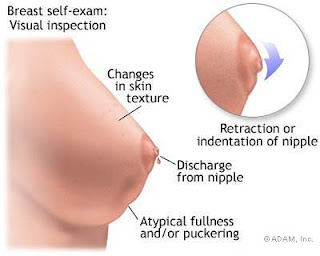The past twelve months were a fruitful time for breast cancer research. We hope the discoveries being made will provide hope and inspiration to all those living with breast cancer, and to the 17,586 women and 144 men expected to be diagnosed in 2017.
Featured here is BCNA’s top 10 list of breast cancer discoveries for 2016. We have chosen these discoveries for their contribution to breast cancer prevention, their breakthroughs in treatment outcomes and their contribution to the quality of life of Australians diagnosed with breast cancer.
Featured here is BCNA’s top 10 list of breast cancer discoveries for 2016. We have chosen these discoveries for their contribution to breast cancer prevention, their breakthroughs in treatment outcomes and their contribution to the quality of life of Australians diagnosed with breast cancer.
Advances in prevention and early detection
1. Newly discovered rare genetic mutations linked to higher breast cancer risk
A global study has identified rare genetic changes that increase the risk of developing breast cancer. People who carry these rare mutations have been found to have a similar risk of developing breast cancer as those who carry the more common BRCA1 and BRCA2 gene mutations. Learning about rare genetic mutations is helpful for researchers so they can continue to investigate how best to reduce risk and treat people at high genetic risk.
Read More at : http://mdhs.unimelb.edu.au/news-and-events/world-first-study-confirms-rare-genetic-mutations-cause-high-breast-cancer-risk
2. Osteoporosis drug may help prevent breast cancer in people at high risk
Cancer researchers at Walter and Eliza Hall Institute have found that denosumab (Xgeva), a drug most commonly used in osteoporosis treatment, is effective in preventing breast cancer in women who carry a BRCA1 gene mutation. This breakthrough may mean women with a BRCA1 gene mutation will have a less invasive option for reducing their risk of breast cancer in the future.
Read More at :https://acrf.com.au/breast-cancer/breakthrough-discovery-may-help-prevent-breast-cancer-in-high-risk-women/
3. Longer-term use of aromatase inhibitors may help stop some breast cancers returning
Researchers in the US have found that taking the aromatase inhibitor letrozole for 10 years instead of five can further reduce the risk of breast cancer coming back for some women. Letrozole may also be effective in preventing new cancers from developing in the opposite breast.
4. Blood test may help predict when a cancer is returning
New research shows that a blood test might accurately predict the return of cancer in people who have been previously treated for early stage cancers. The blood test, also known as ‘liquid biopsy’, looks for cancer DNA in the bloodstream from cancer cells that have resisted treatment.
Read More at : http://www.icr.ac.uk/news-features/latest-features/top-10-scientific-achievements-of-2016#2
Advances in treatment
5. New targeted therapies for a common type of metastatic breast cancer
The PALOMA2 clinical trial found the new breast cancer drug palbociclib (Ibrance) to be an effective new first line treatment for hormone receptor positive, HER2-negative breast cancer when used in combination with the hormone therapy drug letrozole. The addition of palbociclib almost doubled progression free survival from 9 to 18 months.
A subsequent trial in later line therapies has found that palbociclib used in combination with fulvestrant (Faslodex), can slow cancer growth in around two-thirds of women with hormone receptor positive, HER2-negative metastatic breast cancer.
6. New targeted treatments for triple negative breast cancer
Three recent clinical trials have shown promising results in the treatment of triple negative breast cancer by using the immune system to target the growth of cancer cells.
7. Tykerb and Herceptin in the treatment of HER2-positive early breast cancer
New research shows that giving a combination of the targeted drugs trastuzumab (Herceptin) and lapatinib (Tykerb) before surgery is effective in rapidly shrinking some HER2-positive breast cancers.
Improvements in quality of life and management of side effects
8. Scalp cooling systems can help reduce hair loss during chemotherapy
Research has shown that a scalp cooling system can reduce severe hair loss by 50 per cent in some women who are going through chemotherapy.
9. New online interventions can help women manage fear of recurrence
An Australian study testing the effectiveness of one-on-one therapy sessions using new psychological techniques has found a 22 per cent reduction in the fear of breast cancer returning.
10. Research shows personalised exercise programs can help with treatment side effects in early breast cancer
An Edith Cowen University study has shown that personalised exercise programs can help reduce treatment side effects in early breast cancer. The research demonstrates that moderate, supervised exercise can increase energy levels, help with nausea and muscle loss, and may help some people to recover faster.
The findings were presented in an ABC Catalyst episode and can be viewed here.



















